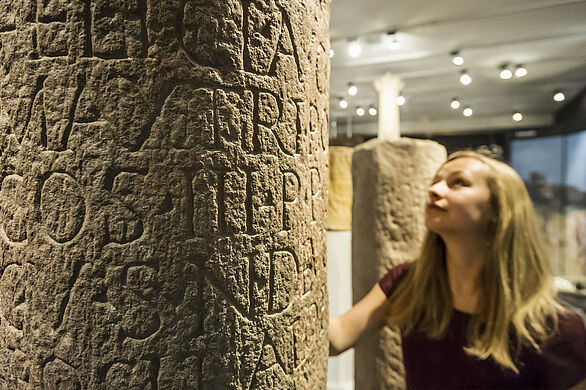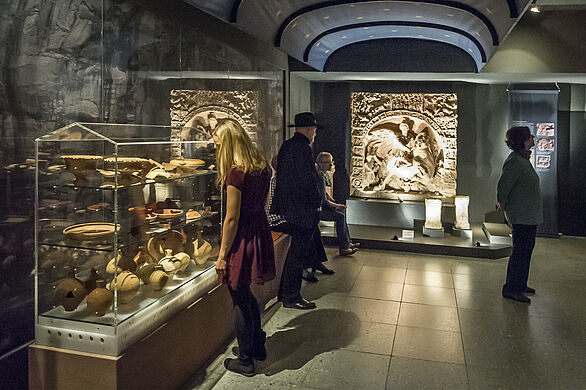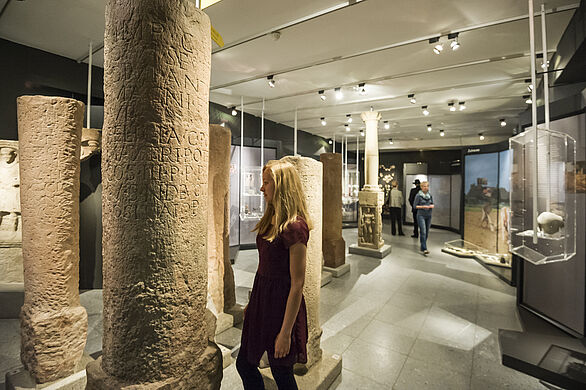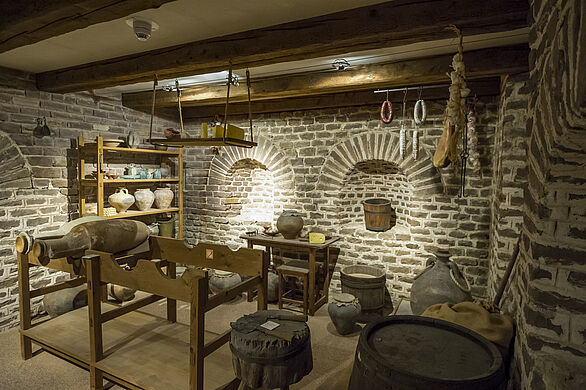© Badisches Landesmuseum, Foto: Schoenen
Romans at the Upper Rhine
Brief description
The exhibition describes the influence and traces left behind by the Romans as they expanded towards Germania.
The Romans founded the province of “Germania superior” in 83 A.D. In the Upper Rhine region, beginning the process of Romanizing the area’s population. The exhibition in Karlsruhe Palace’s lower level tells of over 200 years of continuous Roman rule in this region, and the significant influence Romans exercised on Celtic-Germanic culture.
Large estates, called “villae rusticae”, were typical of the Roman cultural landscape. They not only supplied the large numbers of Roman troops stationed in the region, they also engaged in flourishing trade in various foods, both domestically and abroad. The Romans cultivated grains, vegetables and fruits from the Mediterranean region, and brought wine to Germany. The original basement of a villa from Wössingen shows what a richly filled estate's cellar might have looked like.
High quality milestones refer to the extensive network of Roman roads. In addition, religious objects bring astounding ritual traditions of the peoples of Upper Germania to light, alongside the “classical” Roman pantheon. Roman and Celtic gods combine in a symbiosis, showing how tolerant ancient belief systems could be. Even before Christ, Roman traders and soldiers brought the cult of the Persian god Mithras to Germania. An impressive cult stone from the fort at Osterburken is presented with staging which guests can walk through.
Picture gallery




© Badisches Landesmuseum, Foto: Schoenen
© Badisches Landesmuseum, Foto: Schoenen
© Badisches Landesmuseum, Foto: Schoenen